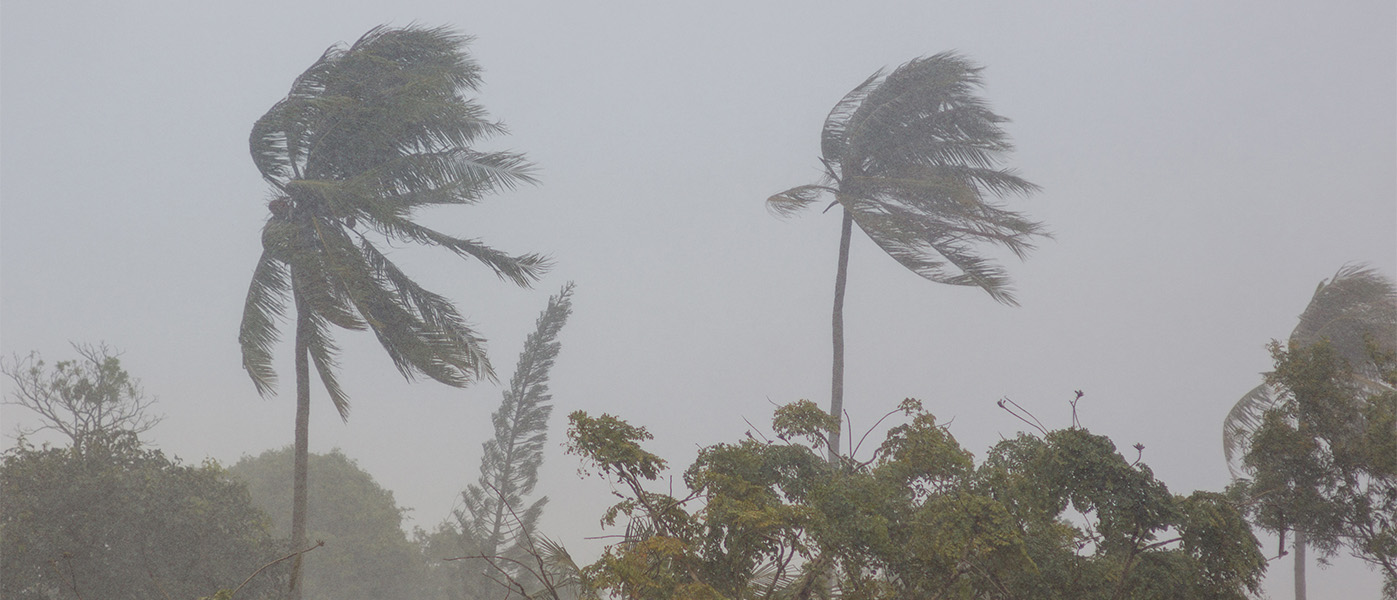After making landfall in Florida Wednesday morning at Category 3 strength, Hurricane Idalia was described as “violent,” “catastrophic,” and even “apocalyptic.” The storm knocked out power for hundreds of thousands of people, halted air travel, prompted evacuations, sparked flash flooding and even turned deadly, as winds as strong as 125 miles per hour carried torrential rain across the region.
It’s the latest extreme weather event making headlines—and surely won’t be the last. To better understand Hurricane Idalia and the impacts we can expect to see in its wake, The Daily asked several faculty members across Case Western Reserve University to share their insights. See what they had to say regarding anticipated effects on coastal topography, news coverage, the insurance industry and more.
1. Coastal erosion and beach loss will make the region more vulnerable.
Storm surges and strong wave action will likely bring severe coastal change and hazards to local communities, given the forecast track and predicted intensity of [Hurricane] Idalia. Coastal erosion and beach loss can reduce shoreline protection, making these areas more vulnerable to future storms.
As the global climate continues to warm, the frequency and severity of hurricanes could worsen. Encouraging sustainable strategies and actions to protect coastlines can improve the resilience of coastal communities.
— Tali Babila, assistant professor in the Department of Earth, Environmental and Planetary Sciences
2. It will be increasingly difficult to ignore the role of climate change in these disasters.
Environmental historians—including Case Western Reserve’s Ted Steinberg, who has published path-breaking scholarship—have argued that the “natural” in “natural disasters” is misleading; while hurricanes, earthquakes, and fires are ubiquitous features of our planet, it’s social choices that make some people more or less vulnerable to their consequences. Poorer people are more likely to have to live in neighborhoods prone to flooding; poorer nations are less able to enforce building regulations that protect their citizens against earthquake risks.
When it comes to Hurricane Idalia, it is striking how widespread the media coverage is linking it to climate change (and something similar happened with this summer’s earlier Canadian fires and an unusual hurricane in western Mexico and California). This wasn’t the case a decade or two ago, when news stories were more likely to note simply that individual weather events could not be specifically linked to climate change (after all, hurricanes and wildfires are indeed part of Earth’s regular cycles) but that future warming could exacerbate future disasters. The coverage today more often notes that the consequences of climate change are already here, and that the disruptions of this summer are part of a new, unstable and dangerous normal.
— Peter Shulman, the Elizabeth and Raymond Armington Professor and associate professor in the Department of History
3. The insurance industry will raise prices.
The insurance industry uses statistical reasoning to set insurance prices. As climate change continues to bring increased levels of weather disasters such as wildfires, hurricanes and flash flooding, specialists like actuaries and underwriters make forecasts for the frequency and severity of future losses, and then mark up projected claims costs.
If we expect the future to bring more frequent weather disasters of higher magnitude [such as Hurricane Idalia, insurance specialists will continue to raise prices for home insurance. Public policy problems emerge because some homeowners, living on fixed incomes, occupy dwellings that would be expensive to repair. Any long-term solution would require support of a wide range of stakeholders.
— Thomas King, professor and chair of the Department of Accountancy
4. Residents of the region will be prone to experience post-traumatic stress.
Hurricanes cause a toll on every level from physical to psychological to social. Even those who live in hurricane-prone areas experience fear, stress, worry and have to exert extra effort in order to prepare.
After a hurricane, those who have survived it can show post-traumatic stress symptoms such as depression, hopelessness, intrusive thoughts, and disruption of sleep among others. Fortunately, in the case of natural disasters, these symptoms tend to be short term and will resolve in a couple months. If they do not, people need to seek additional help. Those in other regions who love people in the path of a hurricane may also experience stress and trauma symptoms.
— Eileen Anderson, the Anne Templeton Zimmerman, MD Professor of Bioethics; adjunct associate professor of psychiatry
On-campus support is available for all students whose families and/or homes have been adversely affected by destruction from Hurricane Idalia. Those impacted are encouraged to connect with University Health and Counseling Services; same- or next-day appointments are available.
There is also an on-call counselor available after regular business hours, on weekends or on holidays; call 216.368.5872 and follow the prompts to connect with a counselor. Virtual mental health appointments are available 24/7 through Timelycare at Timelycare.com/cwru.

